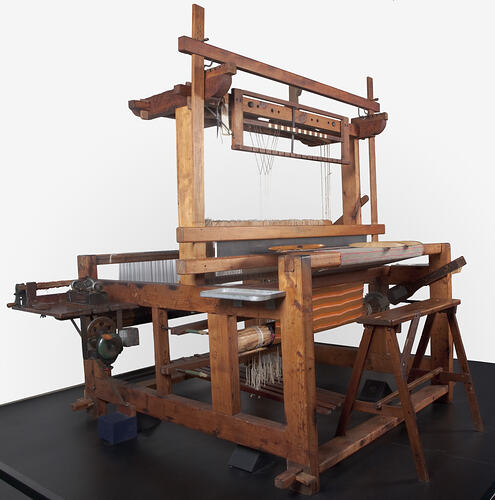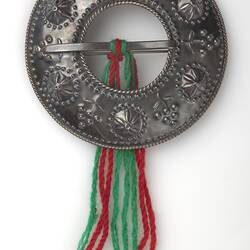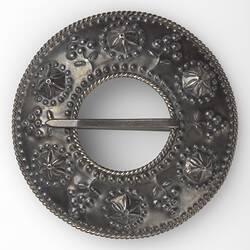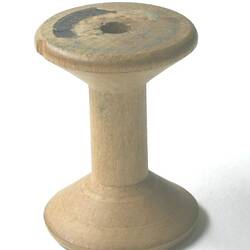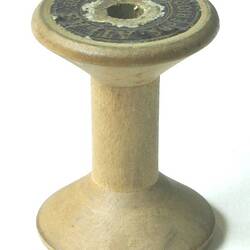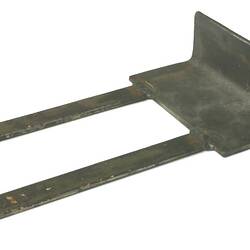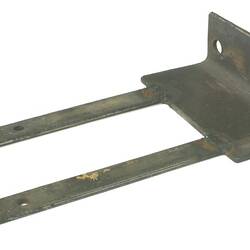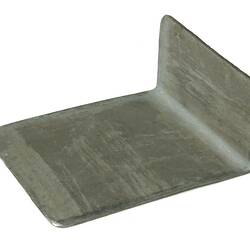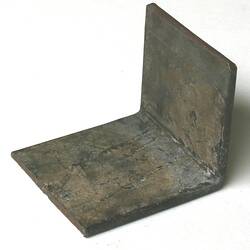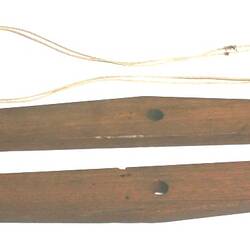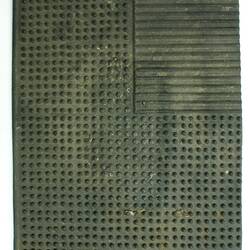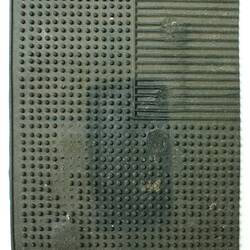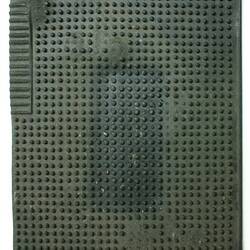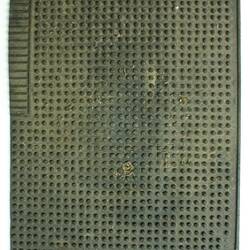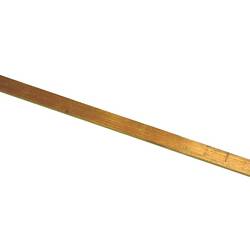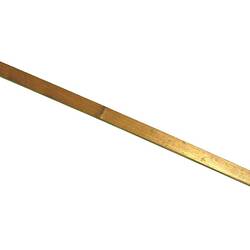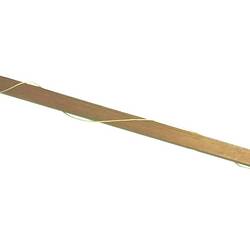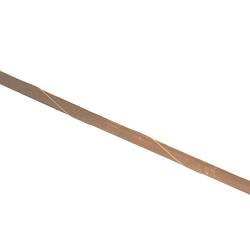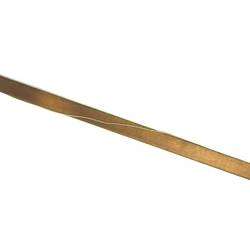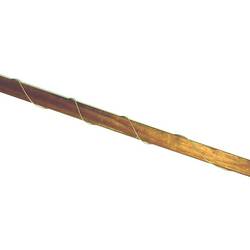Anna Apinis was born in 1913 in Latvia. She attended weaving lessons in Leipaja in Latvia from 1930 to 1933 and spent hours at the nearby Leipaja Ethnographic Museum, recording traditional fabric designs in her notebooks. Anna continued compiling these notebooks throughout her years in Memmingen Displaced Persons camp in Germany after World War II. There Anna had a loom constructed for her by fellow Latvian (male) survivors of the war, made from wood scavenged from bombed-out ruins. Her husband Ervins used his engineering skills to draw the plans for the loom. Anna painstakingly sketched and documented ancient Latvian designs from the regional costumes rescued by other Latvian refugee women. She then wove them on her loom with threads gathered by unravelling old scraps of fabric.
When Anna migrated to Australia in 1950, with her father Ernest, husband Ervins and son Erik, on the navy troop carrier, 'SS General C. C. Ballou', her precious loom came also. This was a blessing as her obsession with weaving helped to ease the pain of displacement and separation that she and her husband Ervins felt in their new land. As suitable weaving materials were difficult to find in post-war Australia, Ervins designed an unplying machine in Parkes Holding Centre in Canberra in 1950 where they stayed upon arrival. Made from cans, scrap metal and wood, he used the machine to unply balls of wool to make weaving threads for Anna. Ervins was actively involved in helping Anna with her craft and designed other weaving devices used by her. In Latvia, Ervins had worked as a qualified road engineer. After arriving in Australia, he was employed as a railway labourer, eventually becoming a rail-bond welder. He remained in this work until his retirement.
Anna became one of the few suppliers of fabric for Latvian national costumes in Australia in the 1950s and 1960s, and exhibited her weaving nationally, at exhibitions and Latvian cultural festivals. In the 1970s she purchased a second loom from Elga Kivicka, a fellow Latvian refugee and weaver who also had a loom made for her in a displaced person's camp in Germany. She fulfilled her dream to keep her cultural traditions alive through her daughter Anita who shares her mother's passion for weaving and is also an expert weaver. Anna passed away in 1997; Ervins in 1999. Anna's original loom was donated to the Museum in 2006. The Kivicka loom, once owned by the Museum, has been transferred to the Latvians Abroad Museum and Research Centre in Riga, Latvia.
More Information
-
Keywords
Art, Artists, Crafts, Cultural Identity, Cultural Traditions, Displaced Persons, Immigration, Latvian Communities, Latvian Immigration, National Costumes, Post War Migration, Textiles, Traditional Costumes, Weaving, World War II, 1939-1945
-
Localities
Melbourne, Victoria, Australia, Ferntree Gully, Victoria, Austalia, Werribee, Victoria, Austalia, Upper Yarra Valley, Victoria, Austalia, Phillip Island, Victoria, Austalia, Victoria, Australia, Australia, Flinders Island, Bass Strait, Tasmania, Australia, King Island, Bass Strait, Tasmania, Australia, Bass Strait, Tasmania, Australia, Riverina, New South Wales, Australia, Kangaroo Island, South Australia, Australia, Green Island, Queensland, Australia, Dunk Island, Queensland, Australia, Great Barrier Reef, Dunk Island, Queensland, Australia, Hinchinbrook Island, Queensland, Australia
-
Authors
-
Article types
